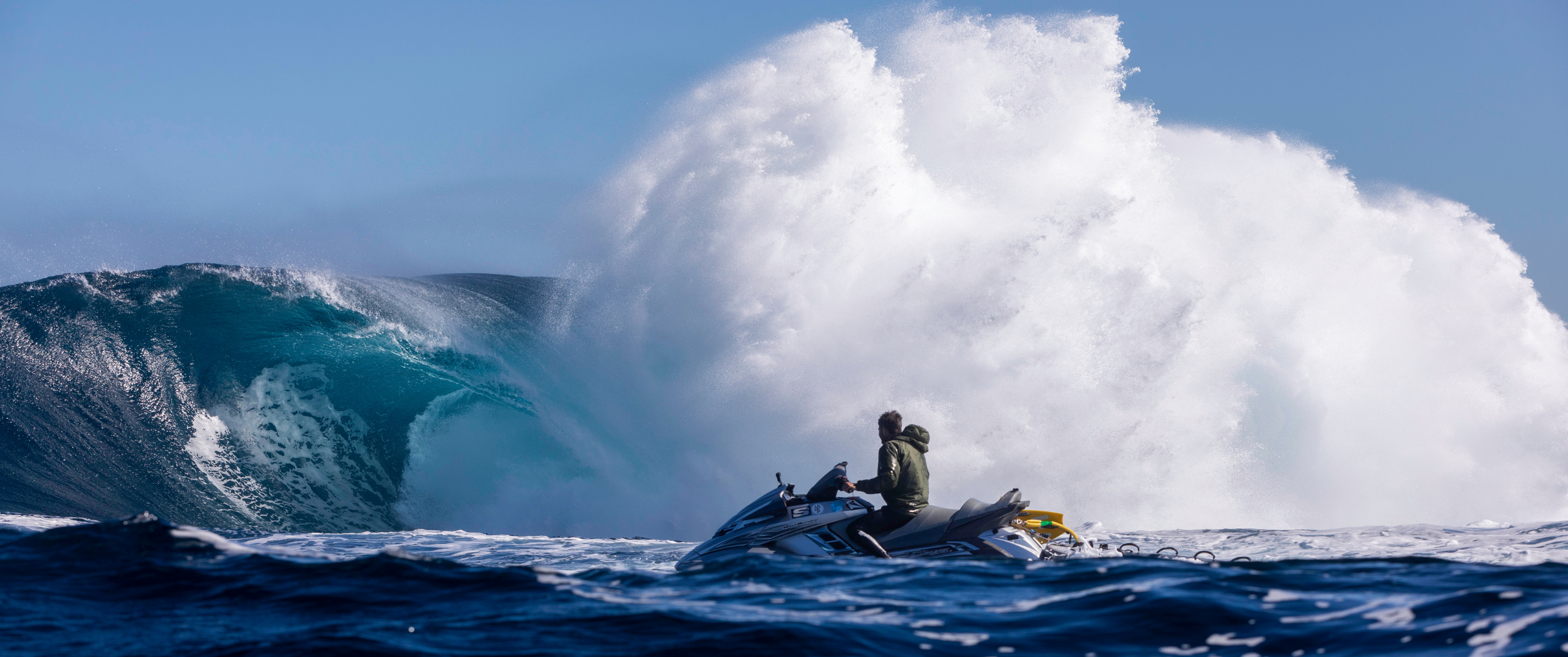Movie Review: Facing Monsters
West Australian Kerby Brown is a slab wave surfer. If you’re like most and don’t know the pocket from the peak, slabs are known as the “world’s heaviest waves”. Many would balk at their immensity, but not Brown.
Feature documentary Facing Monsters from Bentley Dean (director of the Academy Award-nominated 2015 drama Tanna) paddles through the tranquil waters of Brown’s family life before plunging into the depths of his disturbed psyche, juxtaposing the duality of a family man with that of a struggling daredevil.
One of the most compelling characters in the film is Brown’s father Glenn. Despite his aversion to the surf, dad proudly, worriedly, watches his son carve up the ocean with the fin of his board, regretting how he “missed the development of [Kerby’s] passion” during his younger years. Brown is constantly surrounded by unconditional love, but one thing becomes clear: his heart may belong to his family, but his mind is submerged in the sea.
Director of Photography Rick Rifici – known for his work on the sports drama Breath (2017) and the adaptation of novel Storm Boy (2019) – knows how to keep his audience wide-eyed. From the hold-your-breath moments as Brown comes gliding down a barrel, to the seductive aerial shots of southern ocean swells. And let’s not forget the body-cam footage that positions us in the water alongside these indestructible thrill-seekers. You can’t help but feel intimidated and impressed.
Precise editing illustrates how the Browns and the sea are one. Take the cross-cut of a calf swimming beside a full-grown whale and the family photograph of his wife, Nicole, with her newborn son. The blend of nostalgic home videos featuring Brown and his brother Cortney chasing waves (the inseparable siblings share a bond stronger than any leg rope), high-octane footage of zooming jet skis and precious childhood photographs is the amalgamation of Brown’s character.
After moving to Perth, away from familiar waters, the father-of-two falls into a whirlpool of addiction with drink and drugs. Here the film takes a turn as Nicole recollects a specific time she told him to come back safe from surfing, only for him to reply, “I couldn’t give a fuck if I don’t.” Unfortunately, this dark period of Brown’s life is quickly sailed over in the feature, failing to evoke any sincere empathy for a troubled and – it bears saying – privileged surfer.
“They packed up everything to go live next to all the monsters”
– Cortney Brown on his brother leaving Perth
When reflecting over framed pictures depicting Brown’s ride of a lifetime – a 40ft giant when he was just 25 years old – his father laments, “They’d rather see someone get killed than make it.” ‘They’ being the media (who love a good story) and Brown’s competitors. It’s a fairly meta foreshadowing, for when the ocean serves Brown a bloody beating in the film’s climax, you can’t look away. His previous statement, “The ocean is where I go to find peace”, now completely at odds with the horror we see on screen.
After all the blood, sweat and salt, Facing Monsters leaves us hanging. And not in an oh-what’s-going-to-happen-next way. When Brown is facing his biggest monster yet, we’re abandoned. It’s frustrating and, quite frankly, a betrayal of the audience’s investment. Why introduce us to this enigmatic man, get us to care for his passion, admire his strength in the face of psychological demons and physical danger, only to kick us out when the going gets really tough?
At first glance, the Facing Monsters poster, showing a lone surfer floating in the middle of a red sea, conjures thoughts of a shark film. But this feature documentary that’s “more than just a surfing story” shows that it’s not what lurks beneath the surface, but what’s in plain sight we should fear… and ultimately face.






